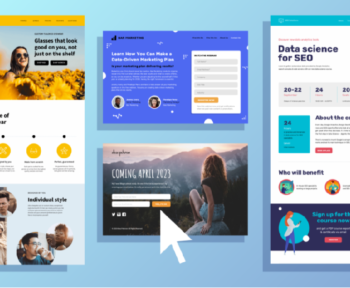Omnichannel marketing is the integration and collaboration of various channel companies used to communicate with customers with the goal of creating a cohesive brand experience. This includes physical (such as stores) and digital channels (such as websites). The goal of Omnichannel’s marketing strategy is to create a customer-friendly, intuitive customer experience that offers multiple opportunities for fulfillment.
Omnichannel Strategy offers users the opportunity to find and buy a combination of services online, in-store - such as “buy online and pick up in-store”. Today, companies across industries are taking advantage of omnichannel strategies, including healthcare, retail, finance, technology, and more.
Just go through this useful video explaining omnichannel marketing
Thanks to online marketing channels, Now than users have multiple options than ever before and can expect information in real-time. Omnichannel marketing allows them to engage with brands on their own terms, leading to an overall better customer experience.
Table of Contents
What is Omnichannel Marketing?
Omnichannel marketing is the seamless integration of branding, messaging, online and offline touchpoints as consumers move down the sales funnel, enabling a more immersive customer experience. Learn about the Bounce rate.
Omnichannel marketing takes a consumer-centric approach to marketing strategy. Consumers can now interact with brands across myriad channels, from social media to customer service hotlines. An omnichannel approach ensures that the consumer has a positive, consistent experience across each channel by offering a few key elements:
- Consistent, recognizable brand tone and vision
- Personalized messaging based on specific interests
- Content that is informed by past interactions and the current stage of the buyer’s journey
- A recognizable brand simplifies brand recognition, while personalization based on interests and
- purchase history makes consumers more likely to interact with branded content across channels.
Omnichannel Vs Multichannel Marketing
Omnichannel and multichannel marketing are two distinct marketing strategies, although both foci on the use of multiple channels to reach potential customers.
Just go through the video explaining the difference between Omnichannel and Multichannel marketing.
The line is very important, and the discussion is so frequent that we want to help identify the difference between the two. For the most part, they do not seem to make much of a difference. Take their definitions for example:
Multichannel marketing refers to the ability to communicate with potential customers across different platforms. A channel can be a print advertisement, retail location, website, promotional event, product package, or word of mouth.
Omnichannel marketing is a kind of multichannel sales approach that provides the customer with a unified shopping experience. The customer can shop online from a desktop or mobile device, by phone, or at a brick and mortar store, and the experience is seamless.
At first glance, each approach may seem to aim to interact with customers through an assortment of different channels, although the terms alone may seem different, the true meaning and outcome strategies lead companies in two different ways. Carried under.
Omnichannel Approach
Omnichannel makes brands available on both online and offline channels, however, it is a step forward to provide a unified, seamless experience in everything. As users move across devices and online and offline platforms, transitions are seamless and messages are communicated through pre-encounters. The all-inclusive approach allows companies to adopt a truly customer-centric approach that takes into account the broader customer journey.
Multichannel Approach
Multichannel is very simple in its purpose, that is, it distributes content and ads across different channels. A multichannel strategy that makes it accessible to consumers online, in print, in-store, etc. Customers can choose where they want to interact with the brand, however, content and engagement on these various channels are often very quiet. With this in mind, the multichannel will more reflect the activities, access the appropriate channels, while the omnichannel will more reflect the overall customer experience.
Benefits of using the omnichannel approach
Today, all brands agree that an inclusive approach can give the best results. Implementing an all-inclusive approach is not so easy and offers many benefits when done correctly. Today’s consumers are accustomed to texting from different brands, and as a result, they are increasingly choosing which brands they want to associate with. Building an Omnichannel customer engagement acts as a brand differentiator, offering the following benefits:
Just Go through the video explaining why Omnichannel marketing is important?
1. Better user experience - Customer experience (CX) is better because it focuses on personalized experience on devices rather than omnichannel channels. By focusing on the customer rather than the platform, companies increase sales and better retention rates.
2. Coordinated brand strategy and identity - Creating a seamless strategy across channels means building an easily recognizable brand image and tone. Organizations should base this image on the core needs and values of the audience. By focusing on the overall experience and working within your brand guidelines to target each channel, you will have a more comprehensive brand strategy that translates to increased loyalty and a more targeted message.
3. The increased revenue- All-inclusive approach encourages consumers to engage with the brand on multiple touchpoints and channels. Research has shown that customers who engage with multiple touchpoints are 32 percent more valuable because these increased, diverse engagements help increase revenue at each stage of the buyer’s journey. This more targeted message also creates loyalty so that the customer has a chance to buy back from your brand. Even if it is a small part of your customer base, repeat customers provide an average of 40 percent revenue.
4. Improved feature data - In fact Omnichannel should be used not only up to the user experience with your brand but also with your data analytics. By tracking engagement across channels, brands can better understand how the customer travels. When & where customers like to participate, and which campaigns create the highest value. All of this data is put back into your strategy to create more targeted campaigns and optimize media spending.
Hope! You liked the content. Don’t forget to share and leave Your comment in the discussion below. Thank You.






2 Comments